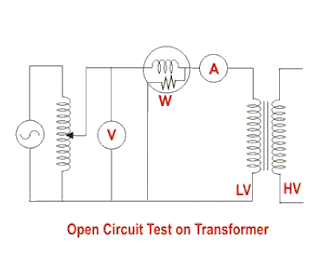Voltage Sensor
Sensors are basically a device which can sense or identify and react to certain types of electrical or some optical signals. Implementation of voltage sensor and current sensor techniques has become an excellent choice to the conventional current and voltage measurement methods.
Advantages of Sensors Over Conventional Measuring Techniques
- Small in weight and size.
- Personnel safety is high.
- Degree of accuracy is very high.
- It is non-saturable.
- Wide dynamic range.
- Eco-friendly.
- It is possible to combine both the voltage and current measurement into a single physical device with small and compact dimensions.
In this article, we can discuss in detail about voltage sensor. A voltage sensor can in fact determine, monitor and can measure the supply of voltage. It can measure AC level or/and DC voltage level. The input to the voltage sensor is the voltage itself and the output can be analog voltage signals, switches, audible signals, analog current level, frequency or even frequency modulated outputs. That is, some voltage sensors can provide sine or pulse trains as output and others can produce Amplitude Modulation, Pulse Width Modulation or Frequency Modulation outputs.
In voltage sensors, the measurement is based on the voltage divider. Mainly two types are of voltage sensors are available- Capacitive type voltage sensor and Resistive type voltage sensor.
Capacitive Voltage Sensor
As we know that a capacitor comprises of two conductors or simply two plates and in between these plates, a non-conductor is kept. That non-conducting material is termed as dielectric. When an AC voltage is provided across these plates, current will start to pass owing to either the attraction or the repulsion of electrons by means of the voltage present on the opposite plate. The field among the plates will create a complete AC circuit without any hardware connection. This is how a capacitor works.
Next, we can discuss about the voltage division in two capacitors which are in series. Usually in series circuits, high voltage will develop across the component which is having high impedance. In the case of capacitors, capacitance and impedance (capacitive reactance) are always inversely proportional.
C → Capacitance (Farad)
XC → Capacitive reactance (Ω)
f → Frequency (Hertz)
From the above two relations, we can clearly state that the highest voltage will build up across smallest capacitor. The capacitor voltage sensors work based on this simple principle. Consider we are holding the sensor in our hand and then placing the tip of it near a live conductor. Here, we are inserting the sensing element of high impedance into a series capacitive coupling circuit. In this moment, the tip of the sensor is the smallest capacitor which is coupled to the live voltage. Thus the whole voltage will develop across the sensing circuit and it can detect voltage and indicator like light or buzzer sound is turned on.
Resistive Voltage Sensor
There are two ways in converting the resistance of the sensing element to the voltage. First one is the simplest method that is to provide a voltage to the resistor divider circuit comprises of a sensor and a reference resistor which is represented below.
A → Gain of Instrumentation Amplifier.
δ → Change in the resistance of the sensor analogous to some physical action.
Power failure detection.
Load sensing.
The voltage that is developed across the reference resistor or sensor is buffered and then given to the ADC. The output voltage of the sensor can be expressed as
The drawback of this circuit is the amplifier present here will amplify the whole voltage developed across the sensor. But, it is better to amplify only the voltage change due to the change in resistance of the sensor. This is achieved by the second method implementing the resistance bridge which is shown below.
Here, the output voltage is
When R1 = R, then output voltage becomes approximately
δ → Change in the resistance of the sensor analogous to some physical action.
- In this equation, gain have to be set high because only the voltage change due to the change in resistance of the sensor is being amplified.
Application of Voltage Sensor
Application of voltage sensor are showing below
- Safety switching.
- Temperature control.
- Power demand control.
- Fault detection etc.

















No comments:
Post a Comment